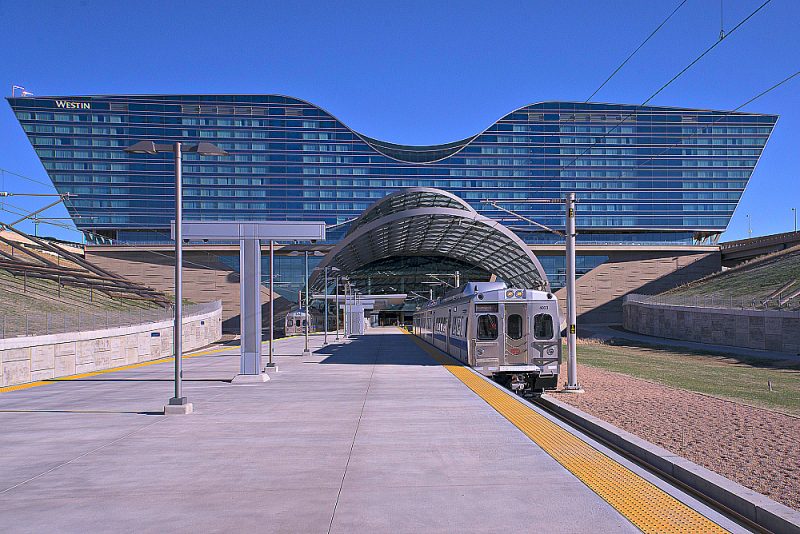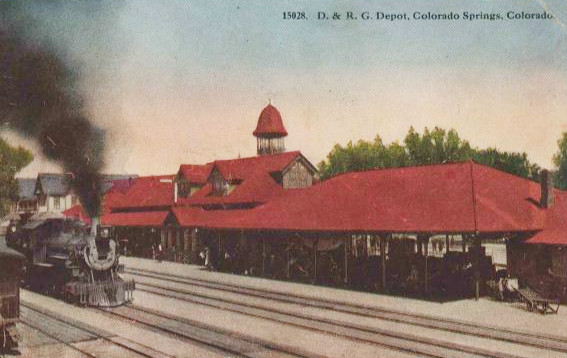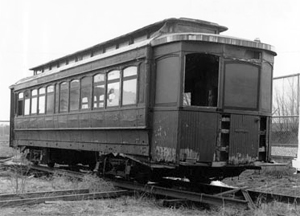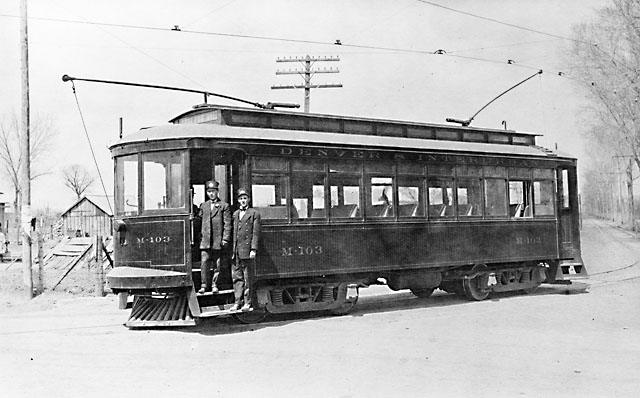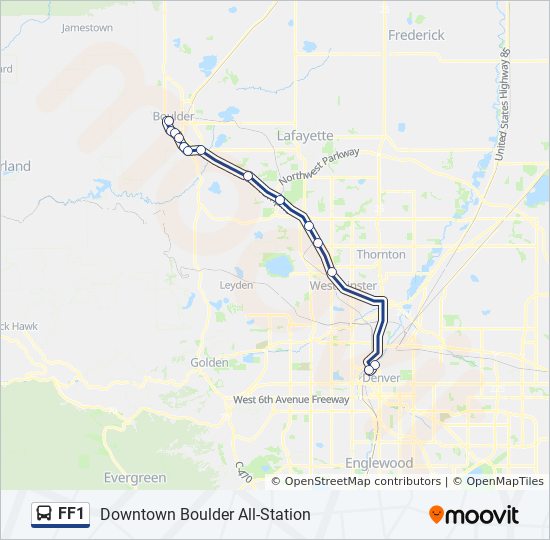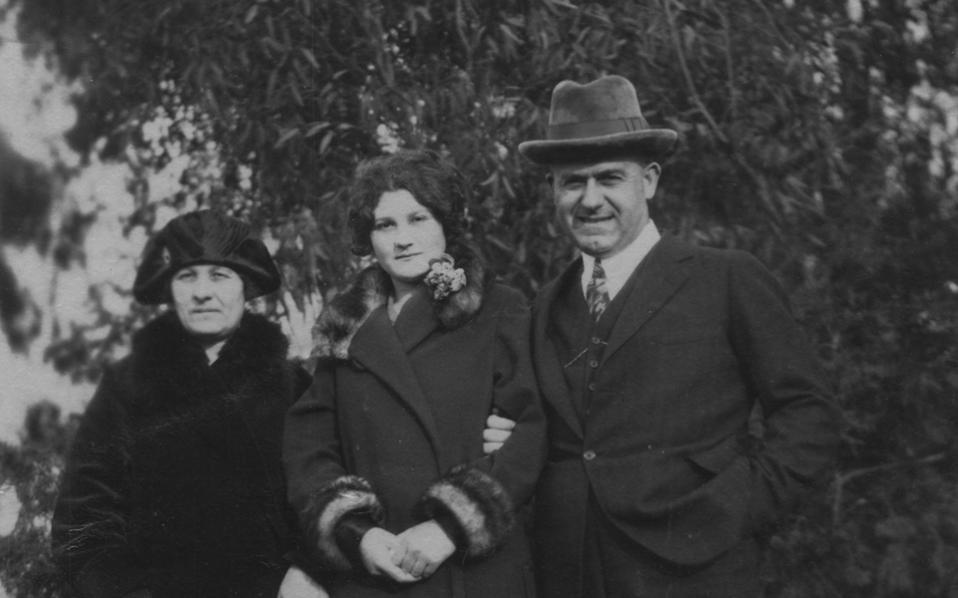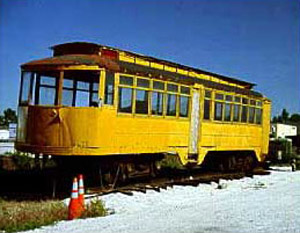-----
 |
| The RTD "A" Line Map (Fastracks) |
The Denver "Fastracks" project is, currently, a Regional Transportation District (RTD) initiative to bring 122 total miles of light rail, heavy commuter rail, and express bus lanes to improve commuter congestion within the city and its surrounding suburbs. One of the more recent additions to the Fastracks project was the electrified commuter lines of the A, B, and G, but planning for these began long before in the 1980s, when the light rail was first being planned as well. However, no serious plans were drawn until 1997, when a new Major Investment Study encouraged construction of a "fixed-guideway mass transit" system; or, in other words, a fancy way of saying "trains."
When Fastracks was approved for commencement in 2004, the new commuter rail project came with it. A route was found in a spare Union Pacific alignment out of downtown from Union Station to Coors field, then east along Peña Boulevard east, past Peoria where it meets the "R" Light Rail, before terminating at Denver International Airport. Before it gained its letter designation, the project was titled the "East Corridor", coming after the "West Corridor" interurban light-rail. The project also specified using locally-sourced Colorado Railcar DMUs to run the line, but pollution concerns, as well as general speed and reliability concerns, changed this to using electric multiple unit cars.
Groundbreaking commenced on the "A" Line on August 26, 2010, with the new letter designation sponsored by the University of Colorado; confusingly, the "A" line ran nowhere near the University. By April 3rd, 2015, the new fleet of 66 Hyundai-Rotem "Silverliner V" paired electric multiple units would arrive in Denver for testing. These modern interurbans found popular use with the Southeastern Pennsylvania Transportation Administration , and were rated to operate at 25kV AC. Due to the "A" line serving a major international airport, the 91-person capacity per car was a welcomed feature.
The line officially opened as the second Fastracks project on April 22, 2016, and immediately the system was beset with problems. Due to a software malfunction in both the new crossing gates and the ones shared with Union Pacific, the gates could not come down in time for the new trains, or at all. The main issue was that the gates were all proprietary to the RTD system, and thus was unable to qualify for state or federal approval. With these frequent delays for both car commuters and rail commuters, crossing guards were hired to manually stop traffic while RTD, even today, continues to solve the gates' timing issues. Despite these continued setbacks, the A line has maintained an annual ridership of 7 million, earning its importance as one of Denver's most important commuter arteries.
The "A" line opened with 8 stations along 23.5 miles, but can't be considered as an interurban because most of it remains well within the city. The B Line, on the other hand, is both a modern and resurrected interurban, as it plans to reach Boulder, CO, by 2042, stretching 41 miles along what used to be the Denver & Interurban's "Kite Route". Currently, it terminates in the Westminster suburb, 6.1 miles out from Union Station, while the "Kite Route" is served by the "Flatiron Flyer" express bus service. Disappointingly, the recent economic downturns forced the B line to operate in a truncated state when it opened on July 25, 2016, but both Denver and Boulder, as well as the cities of Longmont, Louisville, Bloomfield and Westminster all plan to have the interurban finished at some point.
The last heavy rail commuter service to open is the "G" Line (or "Gold Line", during construction) which runs from Union Station to the Denver suburb of Ridge Ward. Like the "A" line and the planned B line continuation, the G line has 8 stations running on a shorter 11 miles, and was first ground-broken on August 31, 2011, under the RTD and the Eagle P3 partnership (which also helped build the A line, among others). The "Gold" designation came from the discovery of gold in nearby Ralston Creek, a few blocks from the "Olde Town" station. Regrettably, the G line did not open in 2016, but instead two years later on April 26, 2019, after prolonged approval processes from both the Federal Railroad Administration (FRA) and the Public Utilities Commission (CPUC). All the completed rail infrastructure (stations, catenary) sat dormant on the G line during this time.
Today, the three lines operate with an average yearly ridership of 9 million between 2018 and 2019. The crossing gate issue has thankfully been stemmed with no major issues or delays reported since the latter year, and even into 2020 the Fastracks project still plans on expanding all three lines for higher peak ridership and longer distances. For now, the Silverliners continue to serve as a stalwart symbol of Colorado's interurban heritage.
And just to be clear, nobody mentioned the horse, right?
Good.
Thank you for riding with us on this month's Trolleyposting coverage of the State of Colorado! Next week, we hop over west to look at the prominent electric roads of Utah! It was a challenge trying to find all the info, but I hope I can make all of you Coloradans proud despite being a filthy Californian. As usual, you can follow myself or my editor on twitter if you wanna support us, maybe buy a shirt as well! Until next week, ride safe!
Wait, what got in here? What... OH GOD-
 |
| Colorado Railcar's DMU sets, bound for TriMet WES (Dave Scheart) |
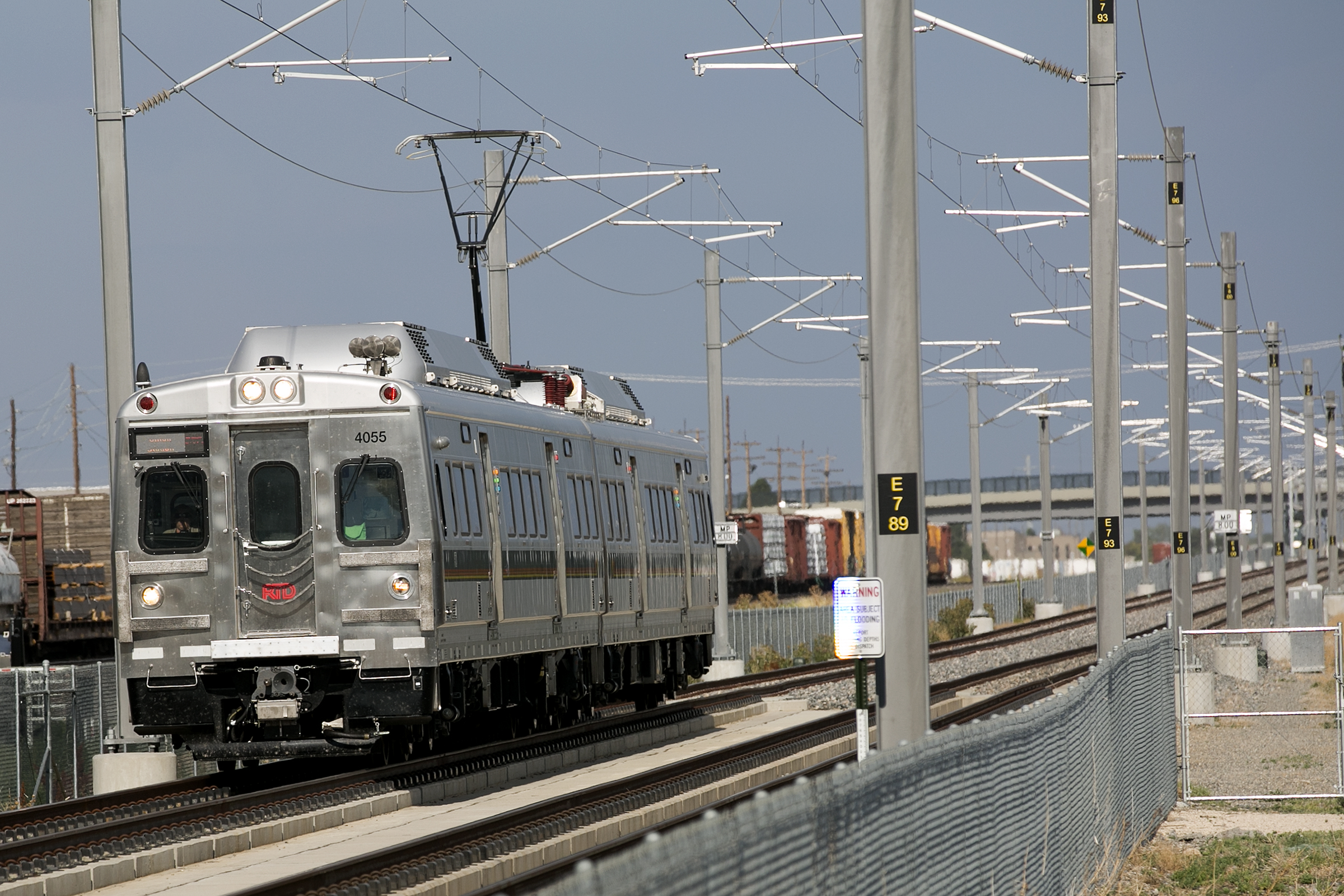 |
| An RTD A-Line train skirts the UP alignment en route to Union Station (Colorado Public Radio) |
The line officially opened as the second Fastracks project on April 22, 2016, and immediately the system was beset with problems. Due to a software malfunction in both the new crossing gates and the ones shared with Union Pacific, the gates could not come down in time for the new trains, or at all. The main issue was that the gates were all proprietary to the RTD system, and thus was unable to qualify for state or federal approval. With these frequent delays for both car commuters and rail commuters, crossing guards were hired to manually stop traffic while RTD, even today, continues to solve the gates' timing issues. Despite these continued setbacks, the A line has maintained an annual ridership of 7 million, earning its importance as one of Denver's most important commuter arteries.
 |
| B Line test train at Westminster Station, prior to opening. (KUNC) |
 |
| The current RTD "B" line compared to the "Flatiron Flyer". The plan is for tracks to cross Flatiron to Louisville, then Boulder, giving one half of the original kite. (RTD Fastracks) |
The last heavy rail commuter service to open is the "G" Line (or "Gold Line", during construction) which runs from Union Station to the Denver suburb of Ridge Ward. Like the "A" line and the planned B line continuation, the G line has 8 stations running on a shorter 11 miles, and was first ground-broken on August 31, 2011, under the RTD and the Eagle P3 partnership (which also helped build the A line, among others). The "Gold" designation came from the discovery of gold in nearby Ralston Creek, a few blocks from the "Olde Town" station. Regrettably, the G line did not open in 2016, but instead two years later on April 26, 2019, after prolonged approval processes from both the Federal Railroad Administration (FRA) and the Public Utilities Commission (CPUC). All the completed rail infrastructure (stations, catenary) sat dormant on the G line during this time.
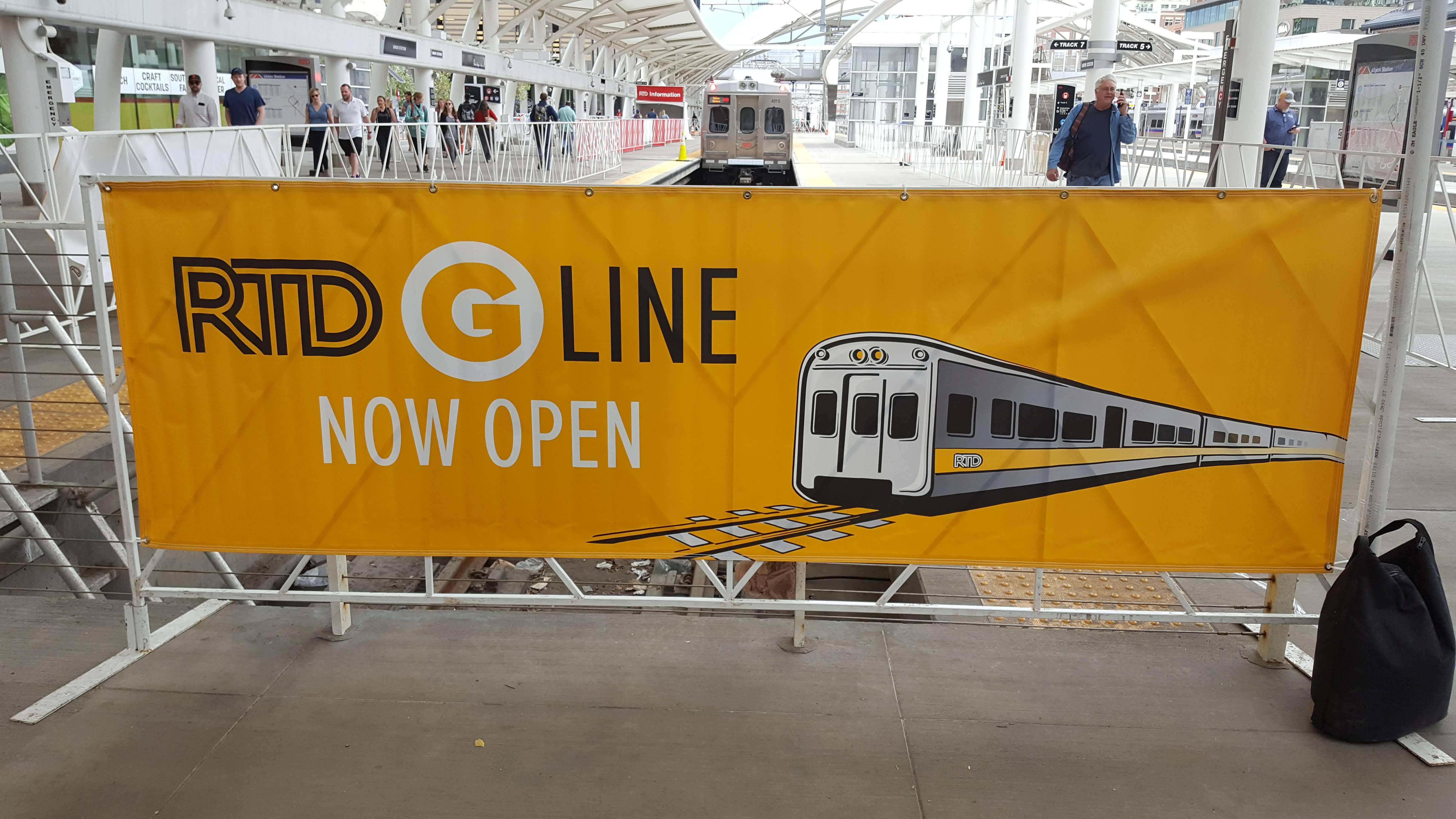 |
| The RTD G line, finally open. (XNateDawgX) |
And just to be clear, nobody mentioned the horse, right?
Good.
-----
Thank you for riding with us on this month's Trolleyposting coverage of the State of Colorado! Next week, we hop over west to look at the prominent electric roads of Utah! It was a challenge trying to find all the info, but I hope I can make all of you Coloradans proud despite being a filthy Californian. As usual, you can follow myself or my editor on twitter if you wanna support us, maybe buy a shirt as well! Until next week, ride safe!
Wait, what got in here? What... OH GOD-
 |
| *demonic neighing* |







